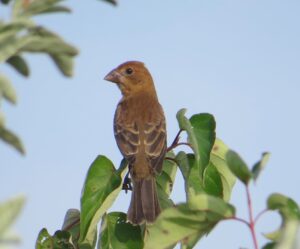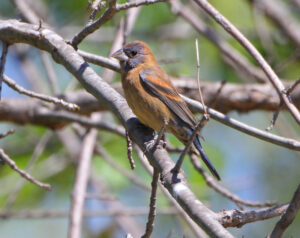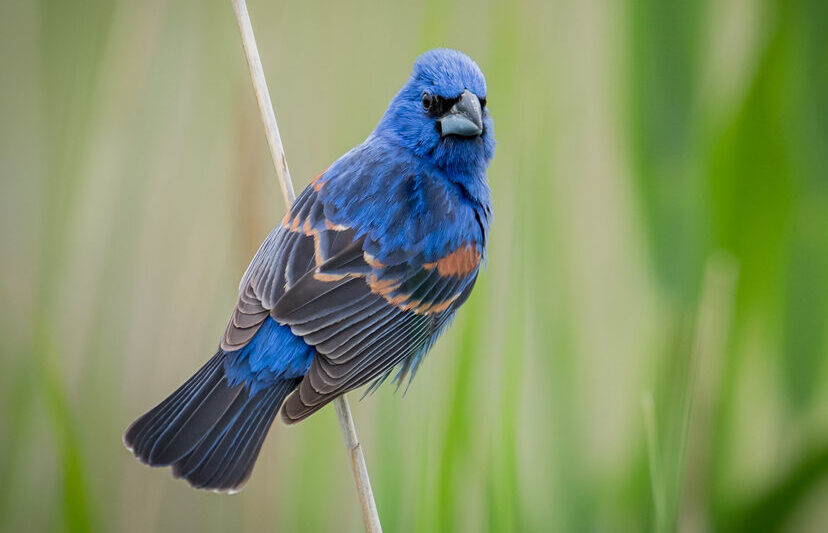Blue Grosbeak, Passerina caerulea
Bill Rowe
As June transitions into July and then August, most songbirds gradually stop singing, but some keep up the effort longer than others and can be heard later in the summer. One of these is the Blue Grosbeak, a larger close cousin of the Indigo Bunting (but no relative of our third blue species, the Eastern Bluebird, which is a thrush). While much less numerous than the Indigo, the Blue Grosbeak is still regular and widespread, breeding across the southern half of the United States (including southern and central Missouri) and down through Mexico to northwestern Costa Rica. The first clue to its presence is often its song, a vigorous, steady, rather low-pitched warble that will eventually reveal the singer perched up in a shrub or small tree. Like so many of our small birds, it vacates this country in the winter in favor of the Caribbean, southern Mexico, and Central America. Its big deep bill looks perfect for seed-cracking, and seeds are indeed part of its diet, but it also takes a wide variety of insects, including larger ones like mantises, cicadas, grasshoppers, and beetles. Oddly, this bird’s lifestyle and status have received relatively little study by ornithologists, but what information there is seems to indicate a stable or increasing population overall.
IDENTIFICATION: An adult male Blue Grosbeak is a deep, slightly purplish blue color with two cinnamon-tan wingbars and a big triangular bill; the only bird it somewhat resembles is the male Indigo Bunting, which is smaller, with a normal sparrow-sized bill and no obvious wingbars. The female, in parallel with the female Indigo, is a warm tan-brown all over, but (again) larger with a much larger bill, and her wingbars are of the same distinctive cinnamon tone as the male’s. One-year-old males in their first spring and summer typically look like females with some patchy blue developing. Perched Blue Grosbeaks of either sex may betray their identity at a distance by the way they persistently twitch their tails sideways, or by their sharp, metallic tink calls.
ST. LOUIS STATUS: Listed as “uncommon” here due to its relatively small numbers, the Blue Grosbeak is nevertheless a regular bird in most semi-open and scrubby areas, or woodland edges; in fact, it is probably commoner around St. Louis than it was fifty years ago. A typical ratio might be 2 or 3 Blue Grosbeaks for every 10 or 20 Indigo Buntings you find, and typical sites would be Riverlands, Columbia Bottom and other conservation areas, or any farmland that is not completely devoid of shrubs and hedgerows. As a neotropical migrant, it’s here mostly from late April through early September, and it was entirely unknown in winter until January 2020, when one was found at Busch CA.
Learn more and listen to the songs and calls of Blue Grosbeaks here.


Female or juvenile male
Photo Credit: Bill Rowe
One-year-old male in spring
Photo Credit: Al Smith




